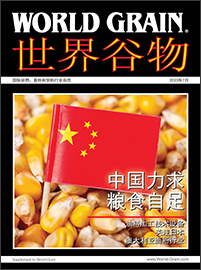LONDON, ENGLAND – The renewal of the Black Sea Grain Initiative, which allows exports from Ukraine by ship, added to the bearish tone in wheat markets in recent weeks. The deal, due to expire May 18, was extended for two months, in an agreement announced the previous day.
United Nations Secretary-General António Guterres announced the agreement at the UN daily press briefing in New York, New York, US, describing it as “good news for the world.”
“I hope we will reach a comprehensive agreement to improve, expand and extend the initiative,” he added. “Looking ahead, we hope that exports of food and fertilizers, including ammonia, from the Russian Federation and Ukraine will be able to reach global supply chains safely and predictably, as foreseen in both the Black Sea Grain Initiative and the Memorandum of Understanding on Russian food and fertilizer exports, the implementation of which the United Nations is fully committed to support.”
In its May 18 Grain Market Report, the International Grains Council (IGC) reported that “after initially dropping to a near two-year low in early May amid sustained competition for export business and negative influences from external markets,” the market had adopted a “more bullish tone … as traders re-focused on production issues in North America and risks to seaborne shipments from Ukraine.”
It pointed to “values retreating sharply yesterday on news of the extension of the Black Sea Grain Initiative, putting global prices down 3% from the previous month and more than a third lower than a year earlier.”
US prices were affected by “lackluster export progress,” the London, England-based experts said, adding, however, that “HRW and DNS quotations remained well-supported amid lingering worries about adverse weather in the US Plains and spring crop sowing delays, respectively.”
For Russia, it said that “old and new crop prices were assessed sharply lower following tenders by Egypt and Algeria, where offers were quoted below the earlier rumored minimum floor price.” It characterized the market in Ukraine as having been affected by “softness … as activity was contained by uncertainty surrounding the future of the shipping corridor.”
“EU prices weakened against an adequate supply backdrop, slowing late-season overseas demand and Russian export competition,” the IGC went on, also noting a decline in fob values in Australia, “in part reacting to a slowdown in purchases by the main Asian buyers,” while quotations in Argentina “advanced steeply as lingering dryness sparked worries about new crop prospects.”
Earlier in the month, on May 12, the Foreign Agricultural Service (FAS) of the US Department of Agriculture explained in its Grain: World Markets and Trade report that “prices for US winter wheat classes have decreased since the April WASDE as drought conditions have eased slightly and lower international prices pressure US quotes.”
“Global exporter quotes declined over the past month despite mounting uncertainty surrounding the future of the Black Sea Grain Initiative,” the FAS noted. “Favorable production forecasts in the Northern Hemisphere, coupled with tame export demand, applied downward pressure on global prices.”
Australian quotes were down on “increased competition expected from Northern Hemisphere supplies,” the FAS said, while prices for US wheat were affected by “subdued export demand, displayed by weak export sales volumes.”
A fall in Russia was down to “favorable planting progress reports along with lower-than-expected offers for Egypt’s recent tender,” while lower prices in Canada were down to “a higher-than-anticipated acreage forecast,” the FAS said, similarly putting a fall in the EU down to “improved crop conditions.”
The exception was Argentina, where prices firmed on “exhausted exportable supplies.”
Chris Lyddon is World Grain’s European correspondent. He may be contacted at: cajlyddon@gmail.com.





